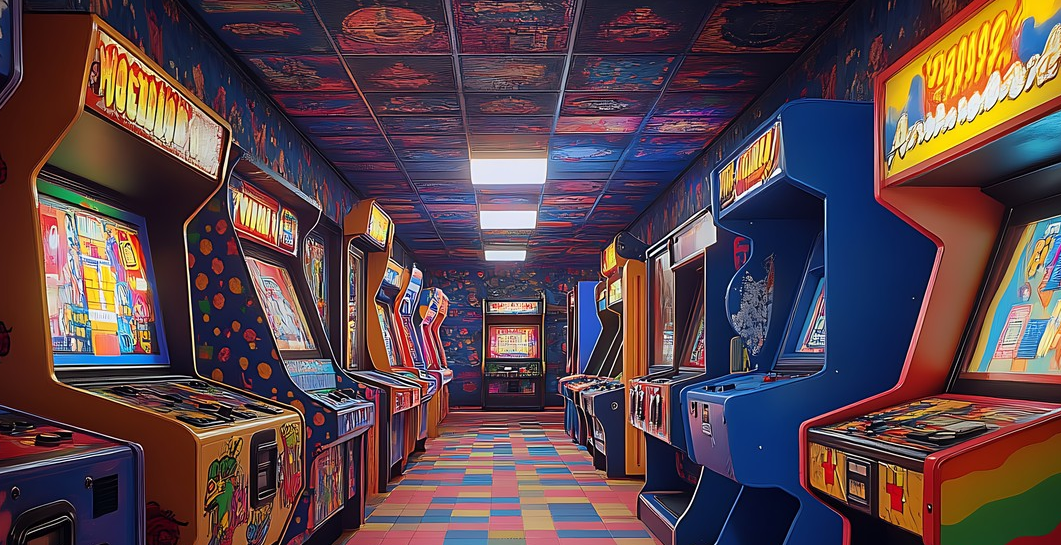Since the mid-20th century, coin-operated games have been a staple of entertainment venues, enticing players with their engaging gameplay and prize potential. From classic pinball machines to modern video arcade games, these machines have evolved significantly but still follow the same basic principles. Next, let’s take a deeper look at the mechanics of coin-operated games and explore several of the most popular coin-operated arcade machines!
Table of Contents

Components of Coin-Operated Arcade Machines
Coin Mechanism
This is the first point of contact when a player inserts a coin. It includes:
- Coin Validator: This device assesses the coin’s size, weight, and material to determine if it’s legitimate. Some machines can be programmed to accept specific coins or tokens.
- Coin Hopper: After validation, the coin is directed to a storage area known as the hopper, where it accumulates until it’s collected by the operator.
Control System
The heart of the machine, it processes the signals from the coin mechanism and controls game functions. It manages:
- Gameplay Logic: This defines how the game operates, including rules, scoring systems, and progression mechanics.
- User Interface: The controls (buttons, joysticks, touch screens) that players interact with, which are connected to the control system.
Display Screen
Most modern arcade machines feature LCD or LED screens that provide real-time feedback, graphics, and scores. They enhance user engagement with vibrant visuals.
Sound System
Speakers integrated into the machine provide sound effects, background music, and announcements, enriching the overall gaming experience.
Power Supply
Coin-operated machines require a stable power source, which is often provided through standard electrical outlets. Some machines may include backup systems for power outages.

Operational Mechanisms
1. Game Activation
- When a player inserts a coin, the coin mechanism validates it and sends a signal to the control system.
- The control system activates the game, allowing the player to begin their session, often providing visual and audio confirmation.
2. Credit Tracking
- The machine keeps track of how many credits the player has available, displaying this information on the screen.
- Players can typically insert additional coins during gameplay to extend their session or earn extra plays.
3. Gameplay Monitoring
- As the player engages with the game, the control system continuously monitors performance, tracking scores and progress.
- In skill-based games, performance data can determine rewards, bonuses, or progression to higher levels.
4. End of Game and Reward System
- At the end of a session, the game calculates the final score and determines if the player qualifies for any rewards, such as tickets or prizes in ticket redemption machines.
- Some machines also provide feedback on player performance, encouraging repeat play.

Popular Coin-Operated Arcade Types
Here are a few coin-operated arcade games that continue to attract players:
1. Fighting Games
Players choose a character and engage in one-on-one battles, using a combination of button and joystick movements to perform attacks, combos, and special moves. These games are popular for their competitive and engaging mechanics. Classic representative games include Street Fighter, Mortal Kombat, etc.
2. Racing Games
Players use steering wheels and pedals to control vehicles, competing against each other or racing against the clock. These games often feature vivid graphics and exciting tracks, creating an adrenaline-pumping experience and becoming a must-have arcade game in the arcade. Classic racing games include OutRun and Racing Driver.



3. Shooting Games
Players use light guns or controllers to shoot targets on the screen. These games range from zombie survival to shooting targets, offering fast-paced action and immersive scenes. Representative games include House of the Dead and Duck Hunt.
4. Skill Games
These games rely on the player’s physical skills rather than luck. Players can win tickets or prizes based on their performance, making them popular in family-friendly environments. The representative skill game is the claw machine.
5. Pinball Machine
Players use pinball machines to keep the pinball in play, hitting targets and ramps to score points. Pinball games combine elements of chance and skill and are a nostalgic favorite. Today’s pinball machines have also seen many innovations, including Lucky Monopoly and Pinball Raiders.
6. Sports Games
These games simulate real-world sports, allowing players to participate in basketball, football, and other sports challenges. They usually use arcade-style gameplay, emphasizing fun rather than authenticity. Classic games include boxing machines and basketball arcades.
In this rich coin-operated game, each type of game provides a unique gaming experience that caters to different interests. Choose a variety of game types so that every player can find their favorite game in the coin-operated arcade world.
Conclusion
Coin-operated arcade machines are a fascinating fusion of mechanical and digital technology designed to provide fun and revenue generation for entertainment venues. By understanding the components and operating mechanics, operators can optimize their machines to increase player engagement and satisfaction. As technology continues to evolve, these machines are likely to incorporate more advanced features, ensuring they remain a much-loved entertainment option for years to come!






